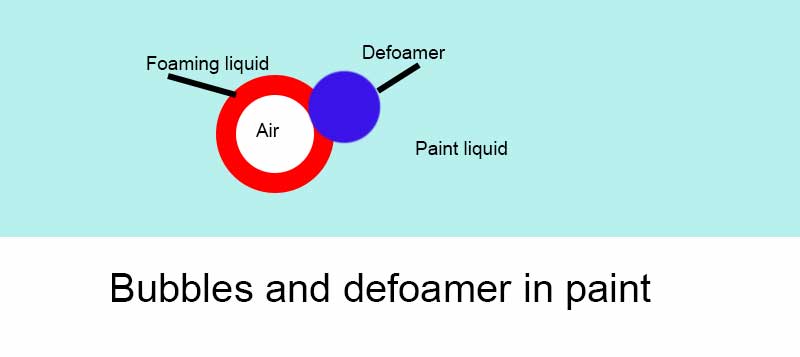Choosing the Right Defoamers for Your Industry Needs
Choosing the Right Defoamers for Your Industry Needs
Blog Article
The Duty of Defoamers in Enhancing Item Top Quality and Efficiency
Defoamers offer as crucial ingredients that reduce this concern, ensuring smoother manufacturing workflows while enhancing the aesthetic and useful characteristics of the last items. The selection of the proper defoamer can be vital to accomplishing optimal results, elevating crucial inquiries concerning formulation compatibility and efficiency metrics that merit further exploration.
Understanding Defoamers
Recognizing the function of defoamers is necessary for maintaining product top quality throughout different industries. Defoamers are chemical additives created to reduce and stop the development of foam in fluid systems, which can adversely impact procedures such as blending, filling, and surface stress. Lathering can bring about inadequacies, item defects, and jeopardized aesthetic appeal, making defoamers a vital part in producing procedures.
In industrial applications, defoamers aid to improve item uniformity and stability. In the paint and finishes industry, foam can interfere with the application process and the final coating. In food and beverage production, excessive foam can hinder bottling and packaging performance. The reliable use defoamers not just guarantees smoother production procedures however also adds to remarkable product efficiency.
Furthermore, the option and solution of a defoamer have to straighten with certain application needs, such as compatibility with various other components, effectiveness under differing temperature and pH conditions, and potential governing constraints. Eventually, comprehending defoamers' functions and their significance in various formulations is critical for maximizing manufacturing and ensuring the highest high quality end products.
Sorts Of Defoamers
Defoamers can be classified right into a number of types based on their composition and mechanism of action. The key types include silicone-based, non-silicone natural, and inorganic defoamers.
Silicone-based defoamers are among one of the most reliable, mostly because of their capability to spread out rapidly on the fluid surface area and disrupt foam development. Their distinct chemical structure allows for exceptional stability, making them appropriate for high-temperature applications and atmospheres with varying pH levels.
Non-silicone organic defoamers, frequently composed of fatty acids or natural oils, are valued for their biodegradability and reduced toxicity. These are usually utilized in food and beverage applications where security and ecological effect are vital.
Inorganic defoamers, which consist of substances like talc or calcium carbonate, act by enhancing the thickness of the fluid, thus decreasing foam stability. They are typically used in commercial procedures where compatibility with other products is not an issue.
Each sort of defoamer has unique advantages and limitations, enabling customized services depending on the particular lathering problems encountered in different applications. Understanding these differences is essential for optimizing efficiency and accomplishing preferred product top quality.
Applications Throughout Industries
Numerous markets leverage defoamers to boost item quality and functional performance. In the food and beverage market, defoamers are important in processes such as developing and milk production to prevent foam development, which can result in ineffectiveness read more and item variance. By controlling foam, suppliers can make certain much better yield and an extra uniform product.
In the pharmaceutical sector, defoamers play a crucial role in the formulation of fluid drugs, where extreme foam can hamper mixing and accurate application. Their usage helps preserve the honesty of the formulas and promotes smoother production processes.
The paint and layers market additionally depends on defoamers to moved here boost the performance of items during application. By lessening foam, these ingredients guarantee a smoother surface and boost the aesthetic high qualities of the end product.

Advantages of Making Use Of Defoamers
While the application of defoamers differs throughout sectors, their advantages continually boost product high quality and process effectiveness. One significant advantage is the decrease of foam development during producing processes, which can otherwise bring about manufacturing delays and disparities in item high quality. By reducing foam, defoamers allow a smoother flow of products, promoting a lot more effective operations and lowering the probability of equipment malfunctions.
In addition, using defoamers can enhance the appearance and texture of last products. In sectors such as coverings, paints, and food handling, extreme foam can compromise the aesthetic aesthetic appeals and overall top quality, while the ideal defoamer application makes sure an uniform coating and desirable features. Additionally, defoamers can add to cost savings by reducing waste throughout manufacturing and enhancing the use of resources (defoamers).

Picking the Right Defoamer
Selecting the right defoamer is critical for optimizing production procedures and ensuring item top quality. The selection of defoamer affects not only the performance of foam control but additionally the total efficiency attributes of the last product. Elements to think about include the kind of application, the chemistry of the formulation, and the ecological problems under which the item will be used.
Different sectors may require specific defoamer kinds, such as silicone-based, organic, or polymeric defoamers. Recognizing the compatibility of the defoamer with the main components is important to avoid adverse responses that might compromise item stability. Additionally, the defoamer's effectiveness in various temperature levels and pH levels have to be reviewed to guarantee regular efficiency.
Testing the defoamer in small applications can supply valuable understandings right into its performance and viability. Consideration of regulatory conformity, specifically in food, pharmaceuticals, and cosmetics, is extremely important in choosing a defoamer. Ultimately, a thorough evaluation of these variables will cause the selection of a defoamer that not just regulates foam successfully yet also improves the high quality and efficiency of the end product.
Conclusion

In conclusion, defoamers are important additives that dramatically boost item high quality and performance throughout different markets. The calculated choice and application of defoamers lead to cost financial savings, maximized resource usage, and raised client complete satisfaction.
Foaming can lead to inadequacies, item problems, and compromised aesthetic allure, making defoamers a critical part in manufacturing procedures.
Report this page